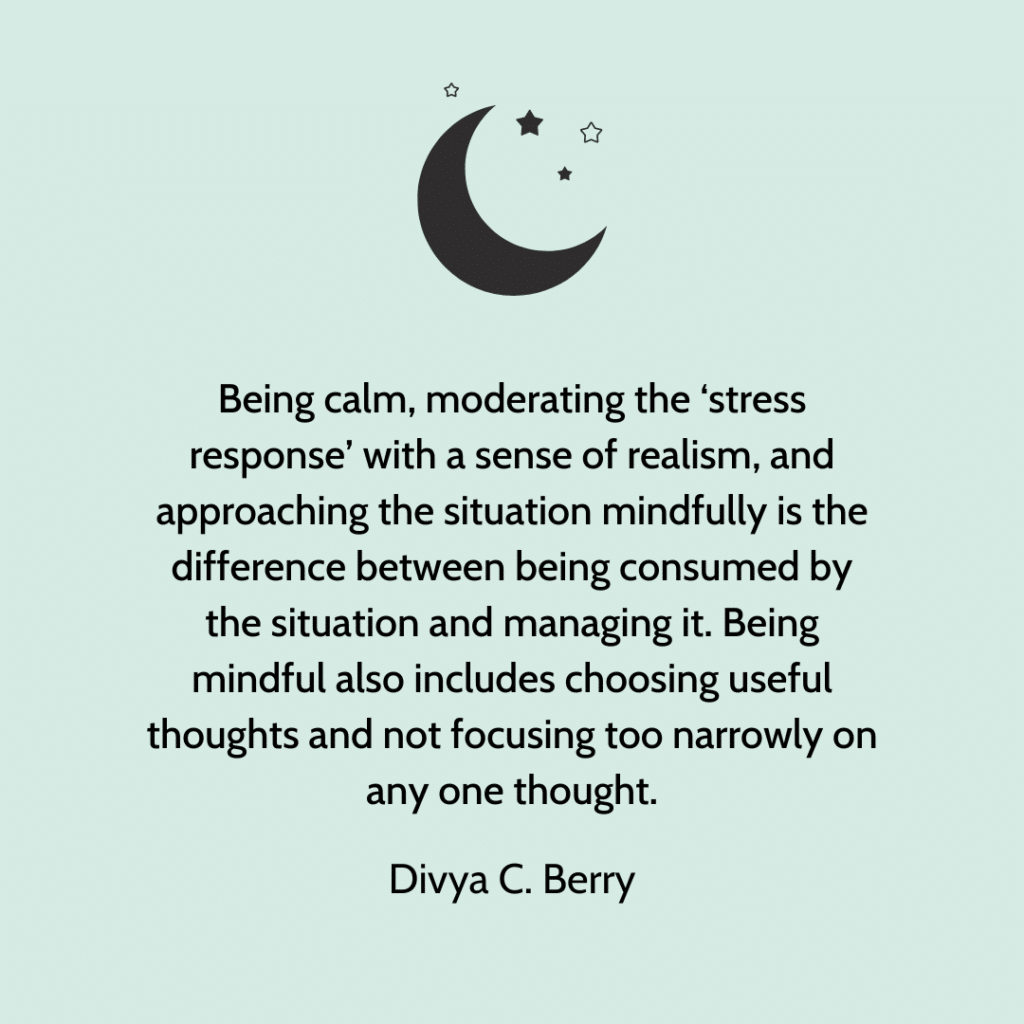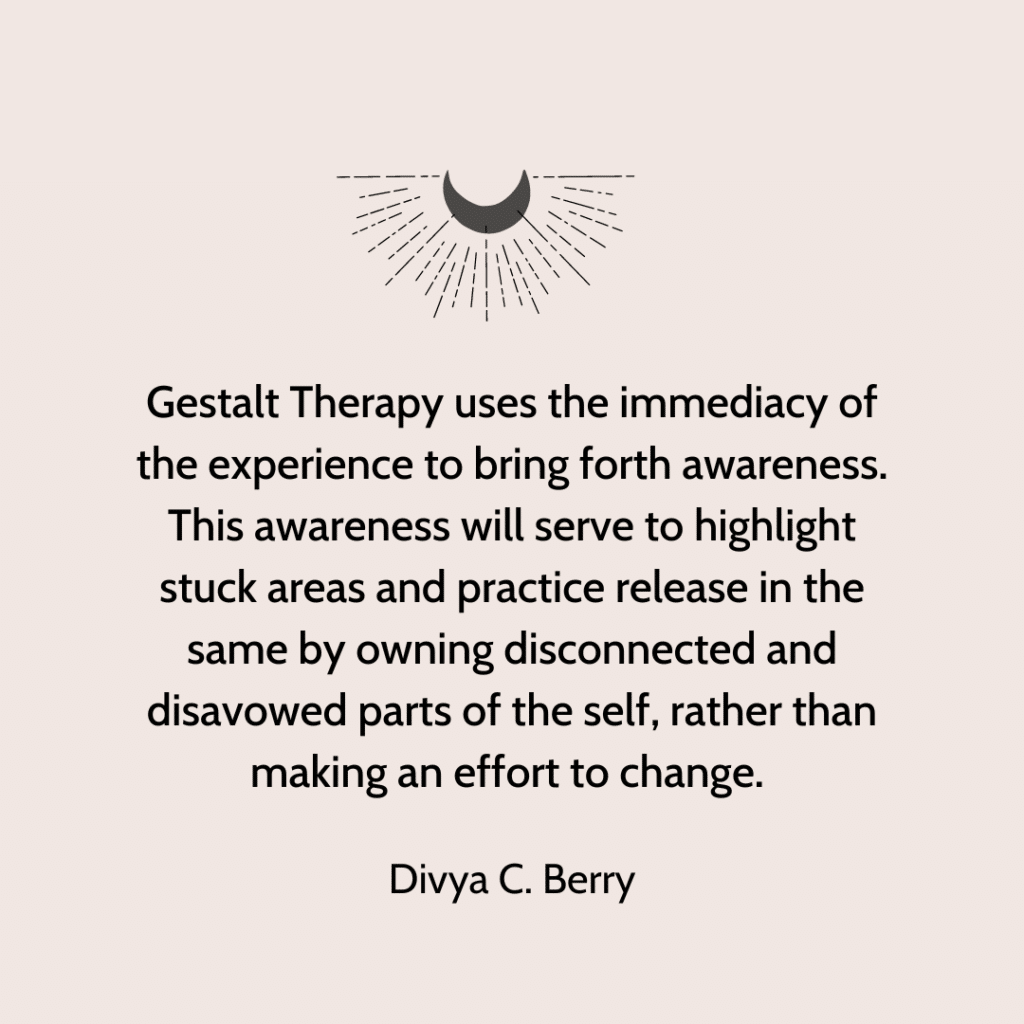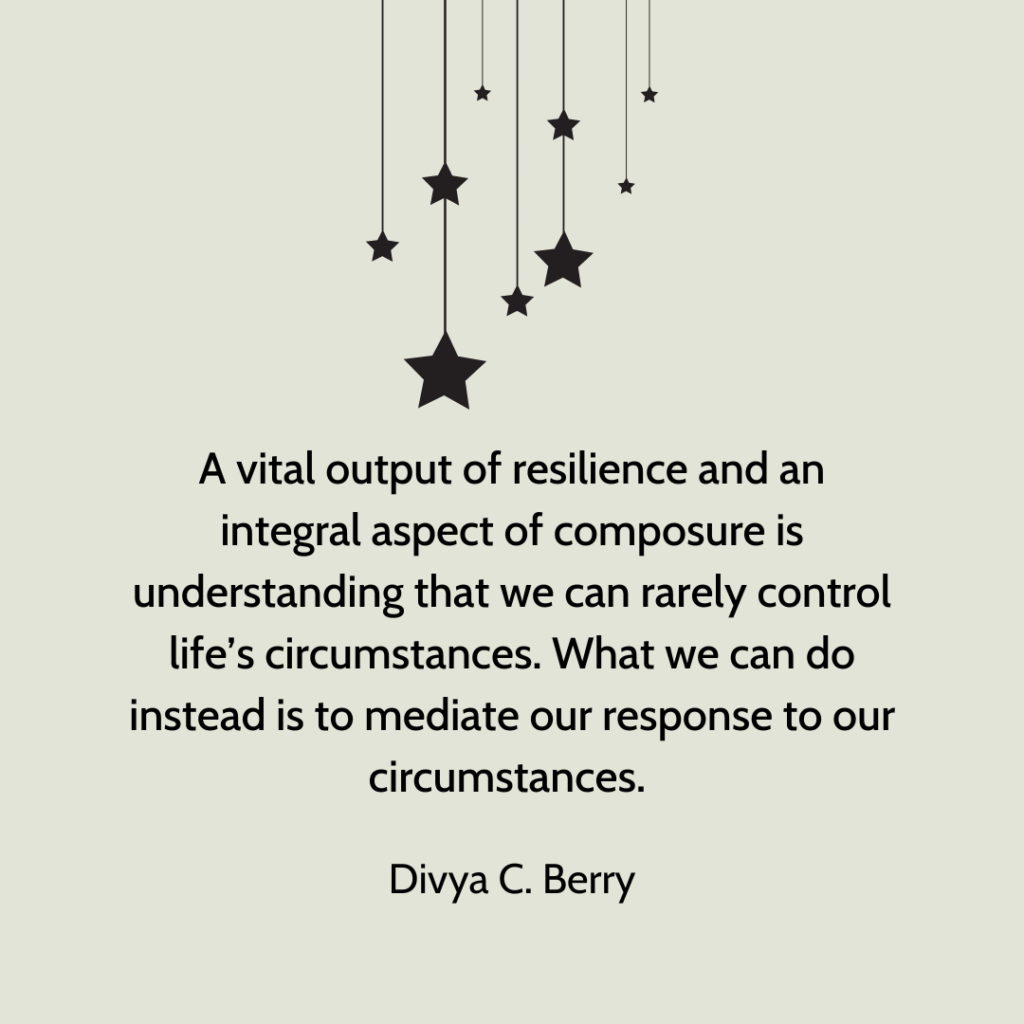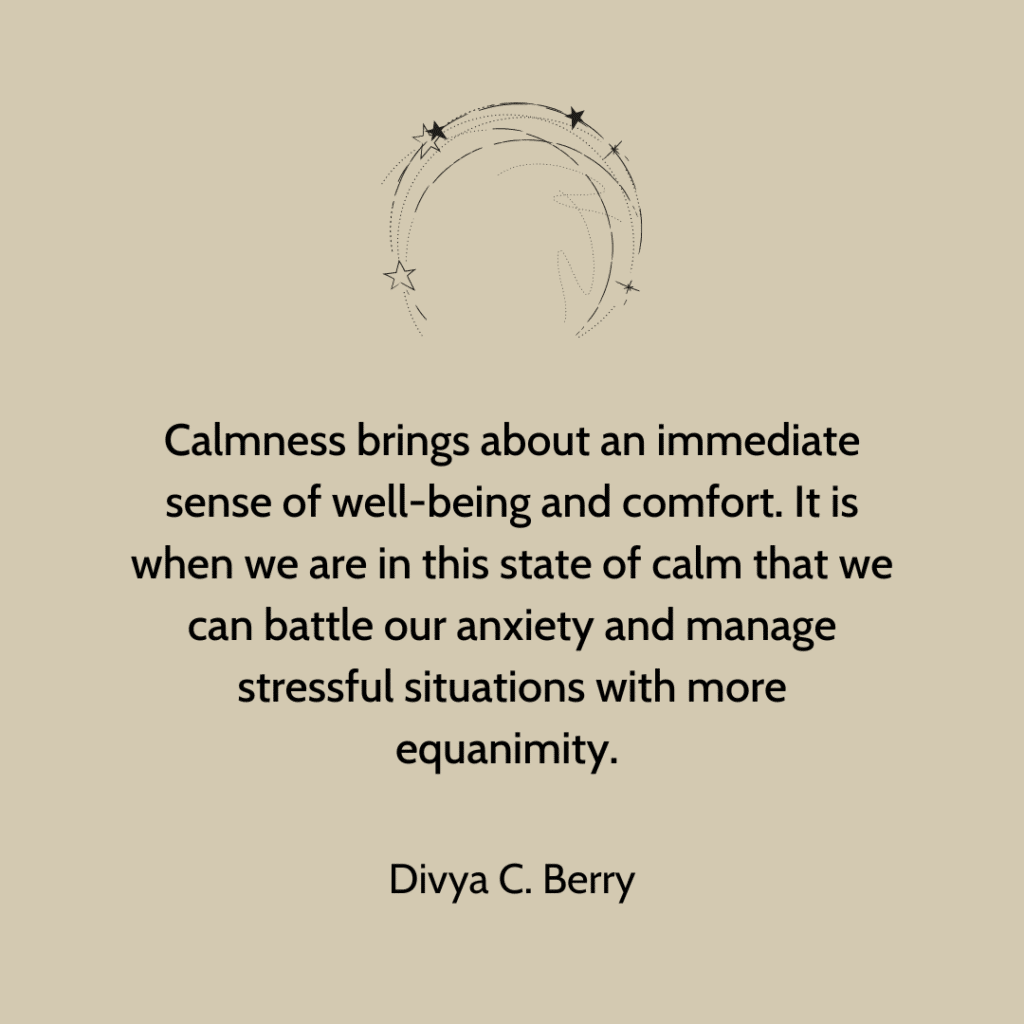Stress is known to be a ‘silent killer’, and for valid reasons. These two words typify the peak of stress – it is often invisible to others and it has the potential to make us very unwell by balancing our neurological and psychological systems. There is a whole range of benefits of staying calm both for the body and the mind.
By staying calm we are able to take better decisions, handle difficult situations, care for ourselves and find more joy in our lives. Being calm is not something you need to be born with. It’s something we can learn through therapy, meditation and by taking good care of our mental health.
Being Calm and Modulating Stress
Humans are wired to be calm and live through their life in a balanced state. A state of ‘stress response’ (Hans Selye, 1936), so often experienced by us, should usually occur only when there is a real crisis.
Much like our hunter-gatherer ancestors would have experienced when a vicious animal was chasing them. In the modern world, however, we tend to experience these mini ‘life and death’ crises many times a day. That is if they are not modulated.
Are you interested in a consultation for stress management counselling? Click to find out more information about my stress management therapy sessions.

This is not to berate the difficult experiences and real-life challenges faced by many but to highlight the importance of scanning an event for what it is.
It’s about seeing it as it is before having an automatic response of fight-or-flight.
Being calm and learning to be mindful can be the very difference between having eustress and stress. Eustress is the positive amount of strain required to mediate life events, and stress is the state of physiological and psychological arousal where our resources are perceived as not adequate to deal with the demands of the environment.
Being calm, moderating the ‘stress response’ with a sense of realism, and approaching the situation mindfully is the difference between being consumed by the situation and managing it.
Being mindful also includes choosing useful thoughts and not focusing too narrowly on any one thought. And although stress is always going to be a vital part of life, the real difference is in our attitude to difficult situations. When your attitude is one of calm, the benefits are multifold.
Further reading: the difference between stress, anxiety and depression
Studies show that mental training can result in increased control over the distribution of brain resources (Slagter al., 2007). The human mind has a limited capacity to process information and conduct processing. So, when two events are taking place nearby, we may not register the second event. The two events compete for limited resources. Mental training and a calm attitude help us distribute these resources.
The principle of Figure and Ground (Fritz Perls, 1987) in Gestalt Psychology alludes to a similar notion. According to this principle, different issues will become figural and recede to the ground at different times.
Practices that involve meditation, visualization, therapy and counselling support individuals in learning to turn their attention to one stream of thought. This, without losing their sense of being grounded to what they are feeling in the here and now.
Meditation and the state of calm
Meditation is a practice that can be learnt and taught. It helps you focus the mind and achieve a state of calm by managing your thoughts. Meditation is widely known for its great benefits in reducing anxiety, enhancing relaxation, and bringing forth a feeling of well-being.

Deshmukh (2006) defines meditation as the art of being serene and present in the moment, rather than working on constantly changing or becoming something in the future.
This is comparable to the ‘here and now’ experience of Gestalt Therapy, where there is no agenda barring a curiosity on the therapist’s part to allow the client’s mind to go where it needs to go – without an end in sight.
Gestalt Therapy uses the immediacy of the experience to bring forth awareness. This awareness will serve to highlight stuck areas and practice release in the same by owning disconnected and disavowed parts of the self, rather than making an effort to change.
When ‘changing’ alone is the objective, it puts additional psychic pressure on the individual – when awareness is the only goal, it allows the person to become and to do so, at their own pace and tempo, and to start owning a sense of grounded calm.
Further reading: the main concepts of Gestalt Therapy
Both meditation and Gestalt Therapy require a certain amount of guidance and support until we can learn to practice them ourselves. When we do, we are aware enough to catch ourselves and bring our minds back to being calm when we deviate away from the present.
What does it really mean to be calm? And what might it take to walk back to a calm state from a stressful one? When we think of the word ‘calm’, it represents a removal from disturbance or agitation. Being calm is the capacity to be away from disruption and to remain composed should it continue.
It is certainly not a magical state that some people are born with and others are not. While it is true that some people may be more wired for being calm and attuned to it, others may find it a more learned skill. In both cases, being calm is a state that needs to be entered into purposefully, even if you have a natural propensity for it.
The benefits of staying calm
An interesting approach to either waking up a latent tendency for calmness or becoming calm when we need to be is to be able to see the benefits of it. This understanding lies in how our brain functions.
The brain is wired for dopamine receptor ‘hits.’ When the human brain can see what advantage is going to come its way it can organize the benefits and attach ourselves to them. In this case, it is the experience of being calm. If we experience the benefits of it, we become able to set goals and become motivated to follow through.
1: Mediating the ‘Stress Response’ & “DOSE”-ing on the right neurotransmitters
Neurotransmitters are the network of chemical messengers that carry information from neurons to the parts of the body where action is required. The brain plays a vital role in this activity.
When we are faced with a stressful situation, the Sympathetic Nervous System is automatically activated by the brain and a host of responses come forth that are required to fight that crisis. This includes a faster heartbeat, adrenal gland activity, quick respiration, sweating, and the feeling of a dry mouth. These responses are typically what the body ‘needs’ to fight danger.
What happens when there is no real danger and our brain has wrongly identified a situation as dangerous? This can be because of old habits, random processing, and habitual perceived failures as well. We then go into a ‘fight or flight’ response to the situation that does not require that response. In that case, there is nowhere for all this additional energy to go and it gets wrongly re-absorbed by the body.
One of the benefits of staying calm is that the there is no pent up energy in this way: we deal with the situation in relation to how dangerous it actually is.
What we need is some Parasympathetic Nervous System activation, which is what the body craves and the brain supports when we are relaxed. This includes loose limbs, lowered heart rate, slowed breathing, gentle responses and a host of other responses that we may recognize from the last time we took a nice bath or did something that gave us pleasure.
Activating the Parasympathetic Nervous System can also relax us enough to want to do something kind for someone else. This altruism then brings forth other feelings of well-being. Time suddenly becomes available to us and it is possible to think outside of our limited box of troubles, which we otherwise often approach with horse blinders in isolation.
We can teach our body to activate the Parasympathetic instead of the Sympathetic Nervous System. One of the ways is to ‘DOSE’ up on the right neurotransmitters – Dopamine, Oxytocin, Serotonin, and Endorphins. Most DOSE activities take place when we are calm and this is what makes us happy. This makes sure we activate the DOSE neurotransmitters instead of activating Adrenalin when it is not needed. The Adrenalin instead furthers the ‘fight or flight’ response.
It may sound like complicated biochemistry but any of us can understand the function of all of these and how they influence the body. When we understand it, we can also learn to control it and find more calm in our lives.
2: Comfort, Resilience, Well-Being
Calmness brings about an immediate sense of well-being and comfort. It is when we are in this state of calm that we can battle our anxiety and manage stressful situations with more equanimity.
There is a slight case of the chicken and egg here. You cannot feel calm when you feel anxious, and therefore it is also harder to battle anxiety with calmness. However, working towards calmness and maintaining composure, especially when faced with the opposite has the additional benefit of feeling the positivity of resilience.

Resilience is all about overcoming difficulty. When we experience the truly positive effects of resilience (often in hindsight), we are fostering positive self-esteem and self-love that is self-explanatory and autonomous – without the complimenting of another or the need to display it outwardly.
This sense of well-being allows the body and mind to slip into a comfortable composure. Once we are there, we can see the bigger picture. Big-picture thinking is the opposite of the myopia of focusing on the nitty gritty and fine print, which often brings distress and the need to control the world around us. So another benefit of staying calm is therefore that we can see things as they are.
A vital output of resilience and an integral aspect of composure is understanding that we can rarely control life’s circumstances. What we can do instead is to mediate our response to our circumstances. If we respond differently, then those circumstances will sooner or later ‘respond’ to what we put into them.
Learning to be composed, especially in the face of Stress, is also a learnt skill. The most intrinsically calm people will struggle in the face of acute stress. Even they will need some reframing and support to channel their inner composure.
3: Managing Obtrusive Thoughts
Amongst the greatest benefits of being calm and channelling our inner composure is the victory over the ever-chugging ‘thought train’. So, imagine yourself with fewer unwanted thoughts. Imagine that you can understand your negative automatic thoughts better and limit overthinking. Sounds great, right?
The thought train can be constant and circular, ruminating and taking us down the same pathways over and over. Often, it projects a bleak or catastrophic outcome, leaving us with a feeling of ‘all or nothing’ in terms of our decisions.
A big aspect of anxious thoughts is that they bring a certain black-and-white feeling. It is a feeling of starkness, of absoluteness. This takes away the adaptability, flexibility, and change mindset that is needed to deal with life’s challenges.
Calmness allows us instead to sink into a deeper reserve. It allows us to ground ourselves with who we really are. It shows us that we are not our thoughts. In our most difficult moments of overthinking, we are convinced that we are nothing more than our thoughts and this can feel intensely bleak. Feeling grounded and observing the same situation with some calm can help us stall the thought train and look at the same situation with fresh eyes.
4: Clarity
The first glimmers of clarity come with our first breaths of calm. Deep breathing, breathwork, and counting our breaths are all modalities of moving to calm. As is using our body awareness to identify stuck feelings and listening to what our physiological arousal is telling us.
As we start to feel calmer, the body responds along with it and vice versa. This symbiosis causes us to lift the cognitive fog and we feel much clearer. Yet another of the benefits of staying calm is the clarity it brings to our own decisions and life choices. It allows us to feel less fear of what we may choose to do going forward.
Chronic and acute stress situations eat away at our self-esteem. People who have not learnt their calm or manage stress end up feeling quite bleak and low about themselves in their most quiet moments. This wounded sense of self and failure of our prestige is often hidden and riddled with shame.
Being more calm, more often also allows windows into myriad ways of thinking and feeling. It brings us options. When we can imagine other options, we feel more possibility. This sense of possibility and promise brings forth clarity and equanimity. When we are clear, we are also less fearful. It makes us stronger in what we need to do.
5: Connecting to the Authentic Self
Many of us live divided lives. This is because we are unable to connect with our deep authentic needs and desires. These may need to be sacrificed for a bigger cause, or perhaps parts of us are not understood by others and we feel too ashamed to share them.
Perhaps we do not feel safe to share our true selves. In all these situations, there is a sense of disconnect and disassociation from the self, which often reflects poor self-care and management of stress.
Calmness, composure, and resilience lead instead to a state of realism. This is a state where it is difficult to hide the true nature of our wants and these can be mediated by tears or by laughter.
Further reading: how to unlock your hidden potential
Whether the inner self is not connected to the outer or the different emotional selves are leading separate lives, we end up with a sense of agitation and restlessness. Countering these feelings through a calm lens and renewed perspective allows for realism and grounding.
The hard work feels less intense when we are connected to our authentic selves. The struggle to manage ourselves suddenly stops. We can simply be ourselves – and the relief is palpable. Perhaps thereafter begins a period of readjustment and introducing our newly contacted desires to the key people and concepts in our lives.
This process of connecting and contacting with ourselves begins by being calm and composed in the face of adversity and extremity, and by allowing the possibility of all our responses.
6: Equilibrium & Finding Joy
In the quest for fighting stress, hacking anxiety, and feeling “better”, we often do not notice how imbalanced our inner equilibrium is. We cannot see how we are far away from the one feeling most of us seek – joy!
Calmness and composure to the stressors and challenges around us allow us to be more balanced. This balance is the pivotal difference between poor coping and successful navigation of a situation. It benefits to stay calm even in relation to our ability to actually handle the situation well.

We need to be in a ‘good enough’ state of coping or some degree of upward swing. We need to feel agency over our situation to even start contacting the part of us that is craving joy. How do we know we are not feeling or sharing joy?
In stress management and coping, the capacity to connect with our deeper strivings is reduced. Only when we are calm, when our body slows down, and we do not feel like we are under attack, can we allow ourselves to locate our inner needs.
So, perhaps it is time to get in touch with that imbalanced inner self, quieten some of the demons of self-deprecation and habitual tendency to keep our own needs at bay, and allow ourselves to start dreaming of lighter softer feelings like contentment and joy.
Being calm is indeed the gateway to being joyful. If the starting point is one of taking what comes with composure and our cup is half full, then we can go about imagining what else can happen and how that can bring us or our lives some degree of joy. A little joy will go a long way.
Methods and techniques of keeping calm
- Grounding with the earth – taking a barefoot walk in the park, lying down flat on the floor, going for a nature run.
- Locating stress and anxiety in the body – especially when it first arrives; where do you feel it, how do you feel it, and where does it go?
- Take a break – move away from stimuli, practice some anti-anxiety and stress hacks that you can do yourself, give your neurological system a break, and practice self-care.
- Be judicious – how do I use my time, do I need people around me, can I reach out to my supportive circle, is it more useful for me to be on my own?
- Practice – meditation, sleep hacks, guided imagery, visualization, bodywork.
- Feeling focused – staying clear of too much cognitive analysis when overwhelmed, working on sensory modulation, walking back to composure, try again tomorrow.
- No force of pressure – calm begets calm, creating the environment to wind down, bringing gentle vibes into the environment.
Conclusion: therapy leads to a calmer mind
Attunement is the act of making harmony, as defined by the Collins Dictionary. Dan Siegel defines it as the reactiveness we have to another person (2007), which is vital to forming relationships.
We must first attune to ourselves, and find our inner harmony and balance before we can tune to another. Tuning into our needs begins with listening to our body and what it is telling us, what it is feeling and lacking. It is hearing our emotional wants and giving them air time.
When we are tuned in with ourselves, we start to feel harmonious. If we cannot generate or garner ‘calm’ externally, we must learn to bring it into our lives. When we feel more attuned, with balance, and equanimity, we also feel more calm. This is the state that brings all of the benefits of staying calm. It is the basis for well-being.
Many techniques and suggestions sound like ‘hacks’ when we try to apply them without the right support and guidance. Self-Care has acquired different meanings to different people. In the therapy room, self-care is understood best as making time for yourself and being able to say ‘No’, hence putting your own needs first.
The big question is ‘how?’ Therapy helps build the toolbox for how to start applying the ‘hacks’ and making them into everyday ways of life. It teaches us how to identify obstacles and, most importantly, be kinder to the self when we cannot manage.
Starting to talk about our feeling and needs is almost always scary, to begin with, and the journey can feel like a lonely one. It is useful to do this exercise with a trained professional in a serene environment that is designed for sharing.
Therapy and counselling provide that safe space where we can come and share why we do not feel so calm, what agitates us, and how we yearn for composure. All these feelings are related to the act of tuning into inner harmony and better alignment with our authentic selves.
Gestalt Therapy and Integrated Counselling are good places to start, especially with their special focus on staying in the ‘here and now’ and working with the body as a tool – come to therapy to know yourself better, or just come to learn to catch your inner calm.

